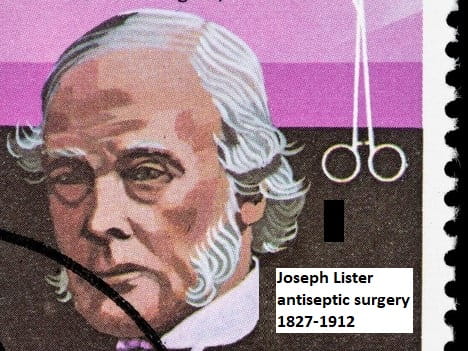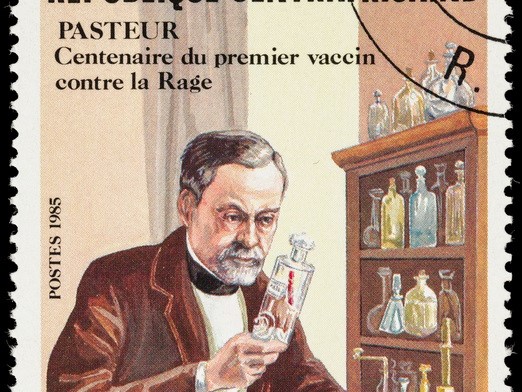Chlorhexidine Adverse Effects

The Bottom Line
Chlorhexidine is an antibacterial agent that is commonly used in dental and surgical settings. Low concentration products sold over-the-counter do not typically cause serious problems, but people can have adverse effects and allergic reactions even with normal use.

The Full Story
Even before the germ theory was presented by Louis Pasteur (of pasteurization fame) and even before antiseptic practices proposed by Joseph Lister (of Listerine fame) became commonplace, people knew that wounds needed treatment. Ancient texts from Mesopotamia describe washing wounds, making salves from plants and ash, and regular changing of wound dressings. Recipes from ancient Greece include wound treatment mixtures of honey, plants, wine, metals, and lanolin. They might not have known about bacteria, but they knew that untreated wounds could smell bad, heal poorly, and even lead to death.
The discovery and first use of chlorhexidine was in the United Kingdom in the 1950s. The chlorhexidine molecule has positive charges at each end. Bacteria and yeast cells tend to have negatively charged areas on their exteriors, and their interaction with chlorhexidine causes damage to the cell membranes of the microbes. In low chlorhexidine concentrations, this interaction slows the reproduction of the microbes. In high concentrations, the interaction is violent enough to tear apart the cell membrane, killing the microbe.
Although chlorhexidine is frequently used medically as a topical antiseptic, it is also known as a common contact allergen. A rash or irritation can develop on the skin of the area that came into contact with chlorhexidine. Symptoms can also include difficulty breathing or severe rash. In 2017, the FDA released a special alert requesting that manufacturers of over-the-counter chlorhexidine products add a warning about allergic reactions.
Chlorhexidine comes in many formulations, including mouthwash solutions, dental gels, and toothpastes. In hospital settings, chlorhexidine is applied to vascular catheters to reduce the risk of bacterial infection. It is also used by surgeons as a preoperative hand antiseptic or “scrub” solution.
Low concentration oral forms of chlorhexidine do not typically pose a problem when unintentionally swallowed. However, even when using chlorhexidine mouthwashes or toothpastes as directed, an aftertaste or change in taste sensation might be noticed and can last for several hours. Chlorhexidine is not well absorbed when swallowed, and some stomach irritation or nausea is typically all that will occur after ingestion of small amounts. However, serious adverse effects can occur when larger amounts of chlorhexidine are swallowed. After ingesting approximately 100 milliliters of a chlorhexidine 5% solution, a woman developed a life-threatening condition called methemoglobinemia. Fortunately, she was brought to a hospital promptly and recovered uneventfully after receiving specialized medical therapy. There is also one report of death that occurred after an elderly woman swallowed a large amount of chlorhexidine solution.
Poison Control often gets calls from health care providers who unintentionally get a splash in the eye while applying the product topically or opening up chlorhexidine pads. When this occurs, the eye should be gently rinsed with tap water or eye rinse, for 15 minutes (see instructions for rinsing the eye). Depending on the concentration of chlorhexidine, it could simply be an irritant or it could cause damage to the cornea. If irritation or pain persists after rinsing and allowing the eye to rest, the eye should be evaluated by a health care professional.
Rarely, chlorhexidine has been unintentionally given by IV in a hospital. One man developed an acute respiratory distress syndrome (ARDS). This is a life-threatening syndrome, but the man survived after days of critical care.
If you think someone might be having adverse effects or has taken too much, check the webPOISONCONTROL® online tool for help or call 1-800-222-1222. Whether you call or get help online, expert assistance is available 24 hours a day.
Pela Soto, PharmD, BSHS, BS
Certified Specialist in Poison Information
Poisoned?
Call 1-800-222-1222 or
Prevention Tips
- Chlorhexidine can be irritating. Watch for skin irritation from topical products and gum irritation from oral products.
- Tell health care providers if you have ever had an allergic reaction to any topical antibacterial agent.
- Keep all chlorhexidine products up and away from children.
This Really Happened
A hospital called Poison Control after a 56-year-old man was admitted for wound treatment. An IV bag containing 4% chlorhexadine gluconate was left near the patient. The mixture was meant to be used for wound irrigation, but it was unintentionally given intravenously. The man was awake for the procedure and immediately complained of pain; the IV infusion was stopped.
The exposure occurred 1 hour before the call to Poison Control. The patient was doing well, and the infusion site looked fine. Poison Control recommended closely watching the infusion site and reviewed the reports where ARDS, low blood pressure, and rapid heart rate occurred. It was also recommended to order specific laboratory tests and to order a chest x-ray if respiratory symptoms develop.
Two hours later, Poison Control called back and the patient was doing fine. Later that evening, the nurse reported that all of his laboratory test results were normal. His IV site continued to improve and he did not develop respiratory symptoms. The pain went away in about 4 days. The patient stayed in the hospital to have another planned medical procedure.
For More Information
Chlorhexidine (oral route) [Internet]. Rochester MA: Mayo Clinic; 2017 [accessed April 19, 2017].
References
Nasser RE. The ocular danger of Hibiclens (chlorhexidine). Plast Reconstr Surg 1992;89:164-5.
Toholka R, Nixon R. Allergic contact dermatitis to chlorhexidine. Australas J Dermatol 2013;54:303-6.
Poisoned?
Call 1-800-222-1222 or
Prevention Tips
- Chlorhexidine can be irritating. Watch for skin irritation from topical products and gum irritation from oral products.
- Tell health care providers if you have ever had an allergic reaction to any topical antibacterial agent.
- Keep all chlorhexidine products up and away from children.
This Really Happened
A hospital called Poison Control after a 56-year-old man was admitted for wound treatment. An IV bag containing 4% chlorhexadine gluconate was left near the patient. The mixture was meant to be used for wound irrigation, but it was unintentionally given intravenously. The man was awake for the procedure and immediately complained of pain; the IV infusion was stopped.
The exposure occurred 1 hour before the call to Poison Control. The patient was doing well, and the infusion site looked fine. Poison Control recommended closely watching the infusion site and reviewed the reports where ARDS, low blood pressure, and rapid heart rate occurred. It was also recommended to order specific laboratory tests and to order a chest x-ray if respiratory symptoms develop.
Two hours later, Poison Control called back and the patient was doing fine. Later that evening, the nurse reported that all of his laboratory test results were normal. His IV site continued to improve and he did not develop respiratory symptoms. The pain went away in about 4 days. The patient stayed in the hospital to have another planned medical procedure.
